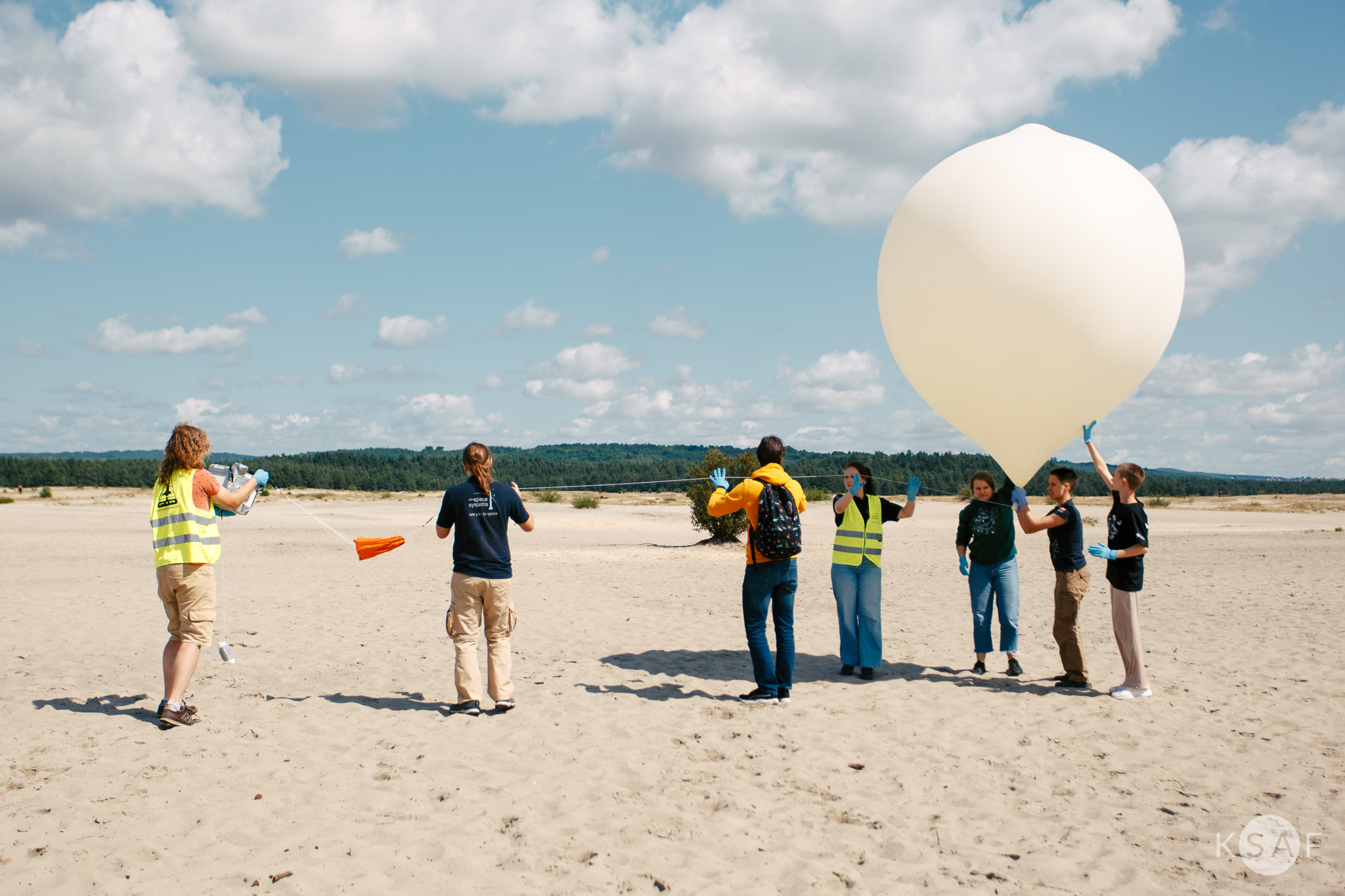

In addition to rocket, Mars rover, and planetary probe projects, students from AGH Space Systems conducted stratospheric balloon missions, during which electronics and various scientific experiments were tested. They participated twice in the international competition Global Space Balloon Challenge.
In 2015-2016, in collaboration with the European Space Agency ESA and the Copernicus Foundation, the team conducted four stratospheric balloon flights. During the first two missions, the electronics were tested: pressure, temperature, and GPS measurements. The flights were successful, reaching altitudes of 28 and 31 km. The next two flights took place as part of the Global Space Balloon Challenge. Measurements were made for pressure, ambient temperature, GPS, temperature of biological samples, and UV intensity in two ranges: 190nm and 200nm. The main research goal was to examine how yeast, algae, lichens, and plants cope with extreme conditions in the stratosphere, exposed to ozone. The balloons reached altitudes of 30 and 34 km. Thanks to biological research and onboard electronics, members of AGH Space Systems, co-creating the Polish team LEO3, named after the idea expressed in English as “Let’s Explore Ozone”, defeated over 400 teams from around the world and won first place in the category of best scientific experiment.
Leader: Bartosz Moczała
Mechanics section: Robert Betka, Tomasz Fuchs, Bartosz Postulka
Electronics section: Bartosz Moczała, Filip Stachowicz
Logistics and marketing section: Bartosz Moczała, Karol Horosin, Marek Bocian
In 2018, the balloon section was re-established. At the end of April and beginning of May, three stratospheric balloon flights were conducted, testing the impact of UV radiation, temperature, and pressure on the activity of bacteriophages in combating bacteria. Samples were collected and examined through cooperation with the Institute of Immunology and Experimental Therapy of the Polish Academy of Sciences. Additionally, the gondola was equipped with electronics to transmit information about the current location. In addition to successful flights, research, and electronics testing, the team also won second place in the category of best photo.
Leader: Weronika Mrozińska
Mechanics section: Weronika Mrozińska, Dawid Ruśniak
Electronics section: Tomasz Tatara, Mateusz Rajzer, Maciej Wyżliński
Logistics and marketing section: Weronika Mrozińska, Tomasz Tatara
Global Space Balloon Challenge 2019 turned out to be a great success for the team. As the competition gained popularity, its difficulty also increased—over 400 teams from 60 countries participated in this edition. The experiment focused on the behavior and endurance of honeybees in space conditions. The balloon gondola also contained a custom-built electronic system for the location of the structure and instruments for measuring CO2 emissions, UV-C radiation, humidity, and temperature. Among these was a Geiger counter built entirely by the team members. The innovation of the experiment and the quality of its execution allowed the team to win 2nd place in the category of Best Educational Initiative in the Global Space Balloon Challenge 2019.
Leader: Dagmara Stasiowska
Mechanics section: Dagmara Stasiowska, Dawid Ruśniak, Agata Zwolak
Electronics section: Bartosz Zieliński, Piotr Sławęcki, Andrzej Laczewski
Logistics and marketing section: Paweł Graczak, Joanna Dubielewska
